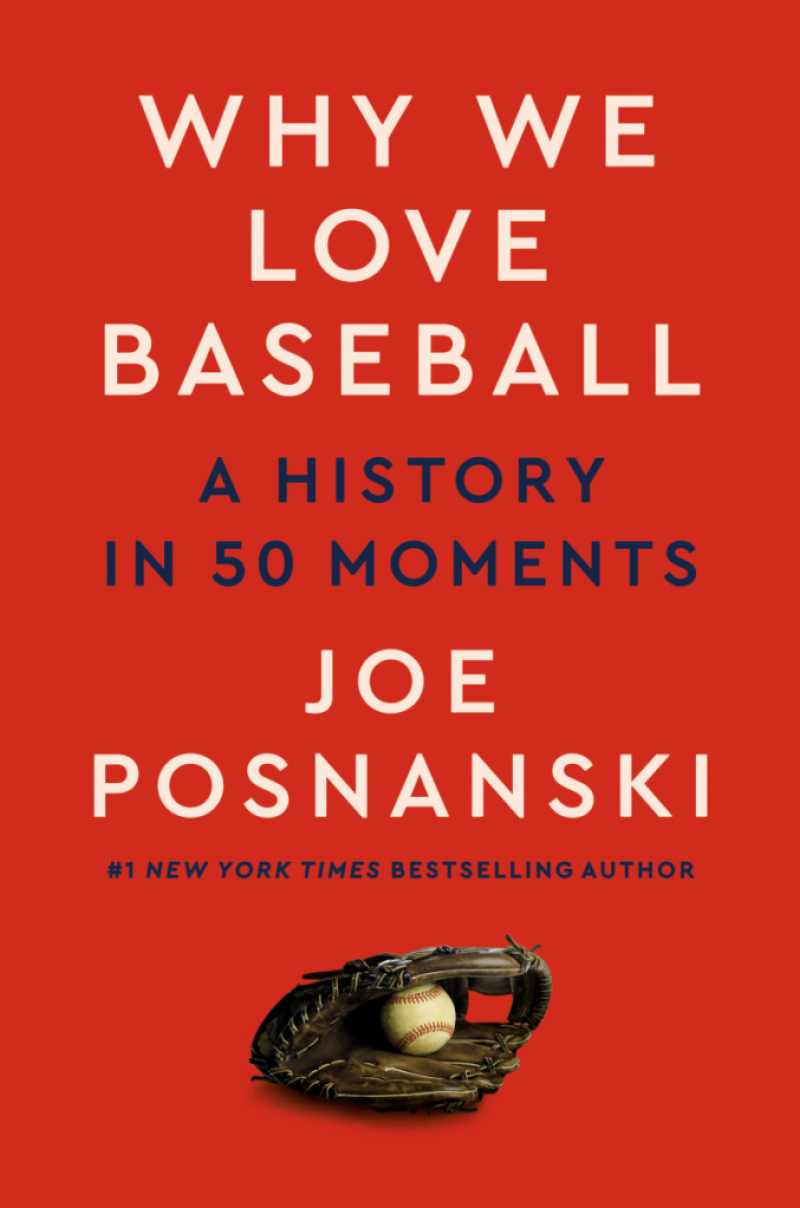Book Review | ‘Why We Love Baseball: A History in 50 Moments’ by Joe Posnanski
Beloved Baseball Columnist Channels Myth-Making Moments

There’s that terrific anticipatory rush you can get when attending a classic movie in a theater and a beloved scene is about to happen. Think Gene Kelly wearing that manic, just-found-love grin, waving his driver along and starting to doo-dah his way through the intro of the unforgettable title number of Singin’ in the Rain. The whole crowd practically sighs, ready to relish four minutes of splash-dancing perfection.
That’s a huge part of the fun for a fan reading New York Times bestselling author Joe Posnanski’s latest, Why We Love Baseball: A History in 50 Moments. Ah, it’s the Jack Morris-John Smoltz Game 7 World Series duel from 1991. And here comes Willie Mays’ over-the-shoulder catch in the 1954 Series, lost in the deepest depths of the Polo Grounds’ center field.
But JoePos, as he’s known by those who cherish his writing abilities as a prolific columnist and author of books like The Baseball 100 and The Life and Afterlife of Harry Houdini, is such a high-caliber story-teller he never fails to bring something new to these old chestnuts. Take the infamous ball-between-Bill-Buckner’s-legs game that extended Red Sox’s World Series misery for another few decades. Generally we hear the story from the Sox’s sad side, all woe and tragedy. Posnanski opts to focus on it from the victorious Mets’ viewpoint, instead, bringing the moment into more vivid life. As he puts it, “Shea Stadium became a cloud of ecstasy and euphoria.”
Alas, not all fandom is euphoric. Clearly a sub-theme of the book is how baseball is a tease, drawing us in with hopes that our team will win, but the losses are sometimes more poignant. Moment #32, Sandy Koufax’s perfect game in 1965, obviously rings with the power of ultimate triumph. But even better, Posnanski takes the tack of providing the immortal Vin Scully’s call of the ninth inning of the game as his way to tell the tale, doubling the kinds of perfection while underlying how announcers are one of the ways many of us nourished our love of baseball — whether it was the mellifluous story-spinner Scully in L.A., the a-beer-in avuncular Harry Caray in Chicago, or the malaprop-dropping Ralph Kiner in an apt Mets match in New York.
To follow up that great moment, JoePos turns to the Harvey Haddix game in 1959, when the Pirates hurler threw 12 perfect innings only to lose his shot at history, and the game, in the 13th. That Posnanski gives this game a more prominent place in his countdown is a hint of the power of hurt. Or it could just be some fun authorial gamesmanship. Koufax’s uniform number was 32, Haddix’s 31 — Posnanski relishes playing with numerology like that, especially given as he admits in his intro “you will undoubtedly have disagreements with the order and what’s missing. That’s part of the fun.”
This is clearly a personal list, even if it checks off many of the sport’s greatest moments (plus some fictional and even animated ones, too). Posnanski starts the countdown with his idol as a child growing up during the 1970s in Cleveland, then Indian second baseman Duane Kuiper. A scrappy diver, Kuiper had no power, even for an age when middle infielders rarely hit their weight, which was slight (Mark Belanger, come on down!). So, of course, the only homer of his career was practically more of a highlight to Posnanski than Kuiper. As JoePos puts it, “Baseball is the best it has been and the best it will ever be when you’re 10 years old.”
Posnanski manages to evade dread listicle-ese by ingenious segues from moment to moment, including adding sublists such as five trick plays, five moments that melt the heart, five unlikely homers. Bet you can guess where that last mini-chapter is placed in relation to Kuiper’s swat. After all, baseball is one way many of us help tell the stories of our lives, especially since, as he points out, “Baseball is a game of fathers, some domineering, some distant, some ebullient.”
It’s also a game of mythmaking, and Posnanski has plenty of fun with that, teasing through whether Babe Ruth really did call his homer in Wrigley Field, if and when Pee Wee Reese hugged Jackie Robinson to pause racist taunts. He claims, “But — and I think most people agree on this — in our pursuit of facts we should not lose the legends.” He particularly needs to say that in relation to Negro League baseball, where many of the “facts” were never recorded, or have been lost, or obscured. (He does this clever trick with footnotes that keep pointing out how things we think of as records fail to account for greater achievements in Black baseball; that nagging voice insisting we must reconsider what we know.)
So moment No. 10 is Satch vs. Josh, that is Satchel Paige and Josh Gibson, arguably the greatest pitcher and hitter in the Negro Leagues. Even better, Posnanski lets his great friend Buck O’Neil relate the story. (Posnanski wrote the beloved The Soul of Baseball: A Road Trip through Buck O’Neil’s America in 2007.) Paige walks the bases loaded to get Gibson to the plate and have a face-off. You’ll have to read the book to find out what happened.
Same as it ever was, perhaps, for the moment is echoed by Japanese great Yutaka Enatsu facing Sadaharu Oh in Japan in 1968. And also by 17-year-old teen girl Jackie Mitchell and her drop ball (taught to her by Dazzy Vance), supposedly striking out Babe Ruth in a Chattanooga charity game in 1931. How fitting in a baseball book that Posnanski can shine each of these magical, maybe mythical moments into diamonds.
This review originally appeared in the California Review of Books.




You must be logged in to post a comment.